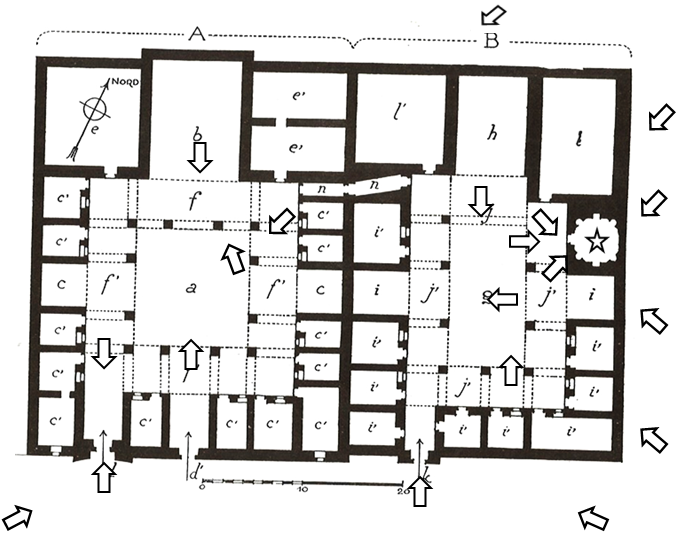Patricia Blessing
This double building consisting of madrasa and hospital was founded in 602/1205 from the estate of Gawhar Nasība Sulṭān, a sister of Ghiyāth al-Dīn Kaykhusraw I, as is evident in the foundation inscription:
‘During the days of the great sultan Ghiyāth al-Dunyā wa-l-Dīn Kaykhusraw b. Qilij Arslān the construction of this hospital was decided in the testament of the queen ʿIṣmat al-Dunyā wa-l-Dīn Gawhar Nasība, daughter of Qilij Arslān, may God please them, in the year 602.’[1]
The patron named in the inscription may have been responsible only for the hospital section, cited in the inscription, while her brother may have commissioned the madrasa. According to Albert Gabriel, this attribution is based on a local tradition that refers to the madrasa section of the monument as ‘Ghiyāthīya’. The madrasa section does not have its own foundation inscription, and according to Metin Sözen, the connecting walls suggest that both parts were built at or around the same time. The madrasa and hospital were built together, and on the interior appear as one structure. In plan, however, the structure appears a complex combination of two four-iwan plans with open courtyards that are both irregular to different extents. For a similar, but more symmetrical approach, see also the Hacı Kiliç Madrasa.
The mausoleum, integrated into the madrasa, is built on two levels, with an accessible crypt. A pair of stairs leads to the entrance of the upper level, similar to the mosque at Sultan Han, although on a smaller scale. The exterior of the monument is not decorated, with the exception of muqarnas and geometric frames on the portal of the hospital (with the foundation inscription), and the large inscription below the dome of the mausoleum. The portal of the madrasa is framed by mouldings, with a round arch under a portal block stripped down to the most elemental fragments.
Interactive Plan

Image Gallery
Bibliography
- Akok, M. ‘Kayseri’de Gevher Nesibe Sultan Darüşşifası ve Sahabiye Medresesi rölöve ve mimarisi’, Türk Arkeoloji Dergisi XVII.1 (1968), 133-184.
- Kuran, A. Anadolu medreseleri, vol. 1 (Ankara, 1969), 65-67.
- Sözen, M. Anadolu medreseleri: Selçuklu ve Beylikler devri (Istanbul, 1970), vol. 1, 80-83.
- [1] “ayyāma ‘l-sulṭāni ‘l-muʿaẓẓami sultani Ghiyāth al-Dunyā wa-l-Dīn Kaykhusraw b. Qilij Arslān dāmat ittafaqa bināʾ hādhā ‘l-māristāni waṣiyya ʿan ‘l-malikati ʿIṣmat al-Dunyā wa-l-Dīn Gawhar Nasība, binti Qilij Arslān arḍāʾ lakum allāh fī sanati ithnīna wa-sittamāʾia.” My transliteration and translation after RCEA No. 3616.


